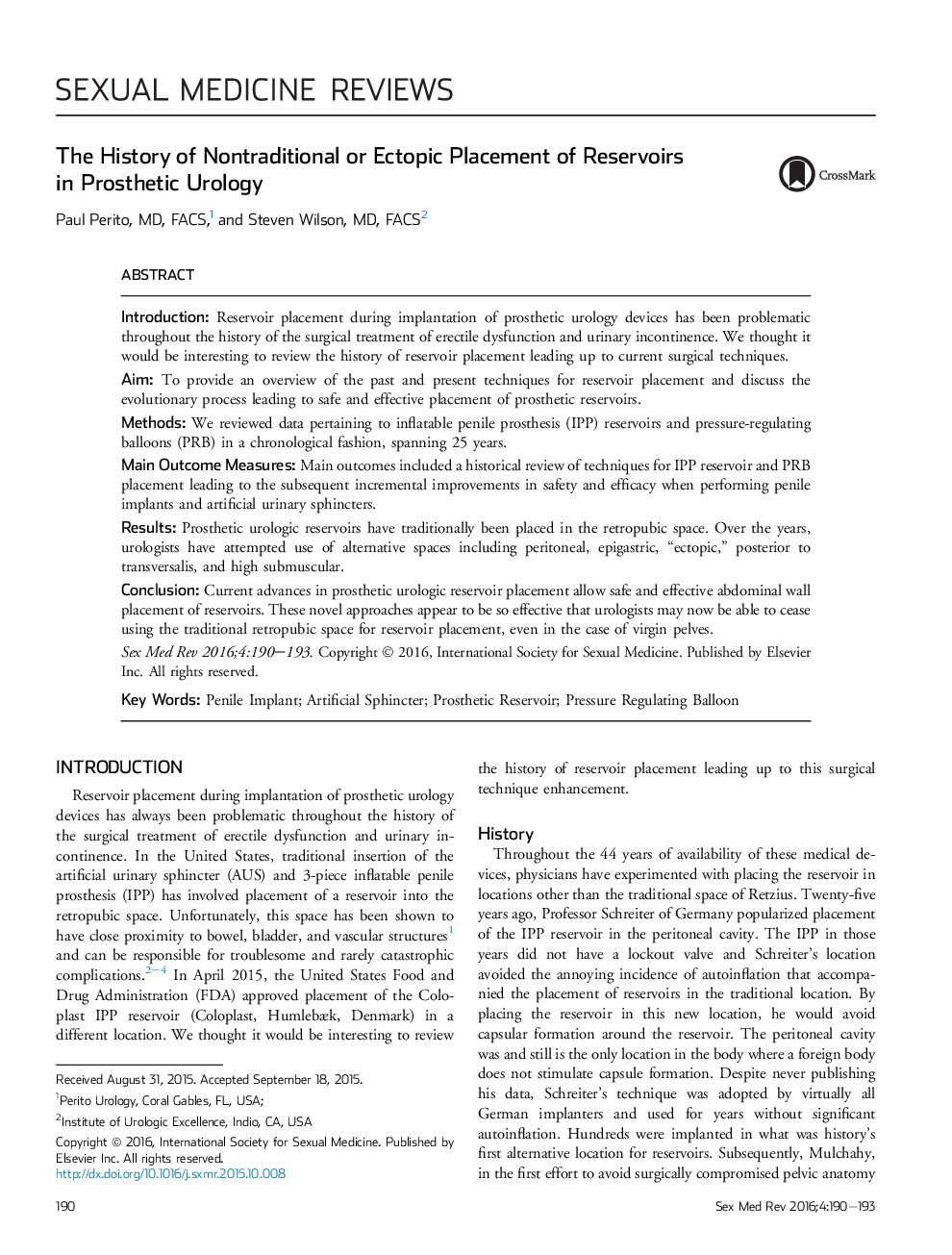| Article ID | Journal | Published Year | Pages | File Type |
|---|---|---|---|---|
| 4274731 | Sexual Medicine Reviews | 2016 | 4 Pages |
IntroductionReservoir placement during implantation of prosthetic urology devices has been problematic throughout the history of the surgical treatment of erectile dysfunction and urinary incontinence. We thought it would be interesting to review the history of reservoir placement leading up to current surgical techniques.AimTo provide an overview of the past and present techniques for reservoir placement and discuss the evolutionary process leading to safe and effective placement of prosthetic reservoirs.MethodsWe reviewed data pertaining to inflatable penile prosthesis (IPP) reservoirs and pressure-regulating balloons (PRB) in a chronological fashion, spanning 25 years.Main Outcome MeasuresMain outcomes included a historical review of techniques for IPP reservoir and PRB placement leading to the subsequent incremental improvements in safety and efficacy when performing penile implants and artificial urinary sphincters.ResultsProsthetic urologic reservoirs have traditionally been placed in the retropubic space. Over the years, urologists have attempted use of alternative spaces including peritoneal, epigastric, “ectopic,” posterior to transversalis, and high submuscular.ConclusionCurrent advances in prosthetic urologic reservoir placement allow safe and effective abdominal wall placement of reservoirs. These novel approaches appear to be so effective that urologists may now be able to cease using the traditional retropubic space for reservoir placement, even in the case of virgin pelves.
